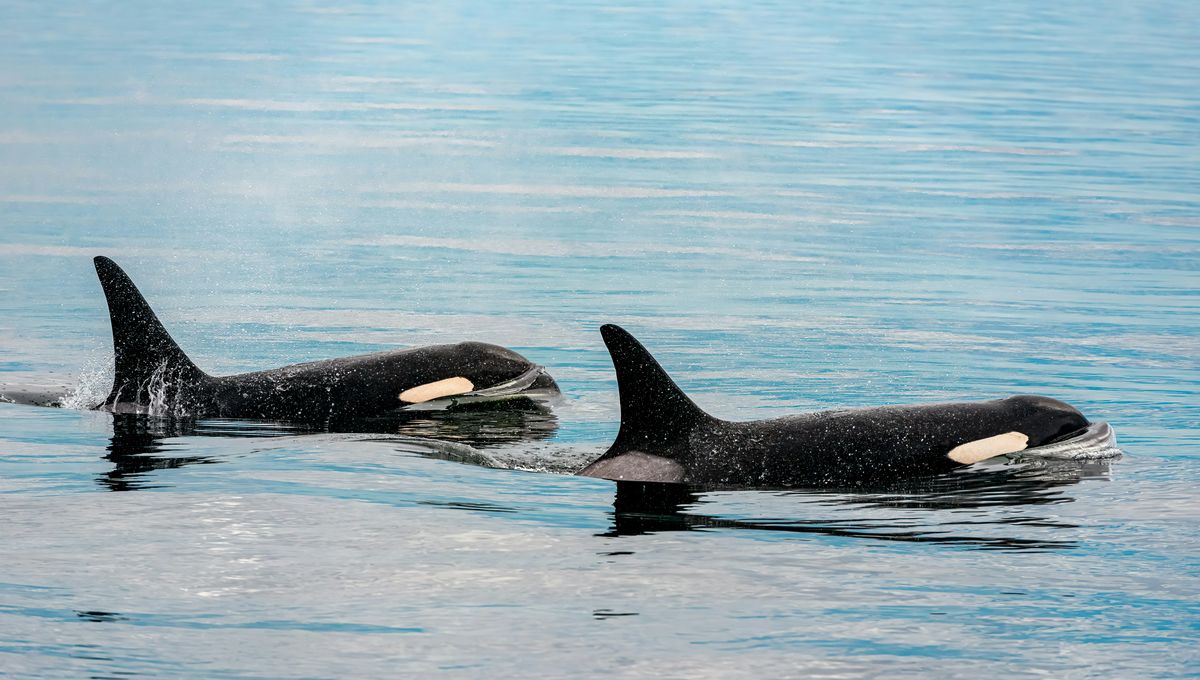
The first-of-its-kind event unfolded on November 2, 2025, in the waters off the coast of Skjervøy in Northern Norway. At least six whale-watching boats were in the area when some started to notice some unusual behavior among a group of orcas, primarily females and juveniles, splashing around the water surface, close to the island of Laukøya.
Some of the boats withdrew to avoid disturbing the group, while two of the organizations – Orca Channel and the Norwegian Orca Survey – deployed drones and acoustic sensors to keep an eye on the situation.
Their initial observations suggested the group was in distress, surrounding the body of a dead calf. To their relief, the drone videography of the Norwegian Orca Survey revealed that this wasn’t the case.
“Then came the turning point: the calf was alive. It was struggling during its first 15 minutes, likely explaining the group’s intense activity, but then began swimming on its own,” Norwegian Orca Survey posted on social media.
Their observations suggested that the calf had just been born to a mother identified as NKW-591, who had previously given birth to numerous other calves without a hitch.
“We saw the very last push with the baby’s arrival in the world. After the whole group gathered, they became extremely active and formed a protective circle around the calf. They seemed quite energetic around the calf,” Orca Channel said on social media.
The calf’s dorsal fin was bent, which can be a sign of ill health or stress in older individuals. However, the researchers believe it was simply squished in the womb and will straighten in due course.
While orca births have been filmed before, those moments have only occurred among captive animals in places like SeaWorld. Restrictive, captive environments offer limited insight into natural behavior, making this wild observation all the more extraordinary. In 2017, the last orca was born as part of SeaWorld’s highly criticized breeding program. It died just three months later.
Given the significance of their observations, the team hopes to collate their data and publish it as a scientific article in the near future.
“This event represents a historic first: the first-ever documentation of a killer whale birth and the newborn’s first hour of life in the wild,” explained Norwegian Orca Survey.
“A truly unforgettable day – witnessing the beginning of a new life in the Arctic,” they added.
Source Link: A Killer Whale Birth Has Been Captured On Camera In The Wild For The First Time